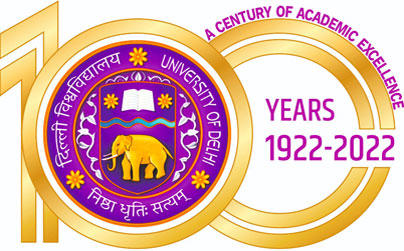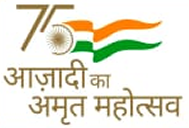Envisaging Viksit Bharat: Perspectives and Challenges
Credits
Lecture
Tutorial
Practical/Practice
Eligibility criteria
Pre-requisite of the course
- Familiarise the youth with the concept of Viksit Bharat
- Identify the pillars to shape India into a Viksit Bharat
- Respond to the challenges and expectations of Viksit Bharat
- Understand the dynamics of transformation
After completing the course, the student shall be able to:
- Comprehend the vision and perspective of Viksit Bharat
- Understand different aspects of Indian economy and society
- Analyse dimensions for inclusive and sustainable Bharat
- Instil a sense of national pride and optimism in one’s own life
UNIT- I Viksit Bharat @2047: A Determination (3 hours)
- Concept of Viksit Bharat
- Indian perspective of Development
- Sarve Bhavantu Sukhinah
UNIT- II : Transforming the Nation (4 hours)
- PM Gati-Shakti National Master Plan
- Energy: Conventional and Non-Conventional
- Digital Transformation
- E-Governance
UNIT- III Empowering Farmers and Youth (4 hours)
- Increasing Farmers Income: Strategies and Challenges
- Non-Farm Rural Sector
- Manufacturing Sector
- Start-ups and Entrepreneurship
UNIT - IV Sustainable and Inclusive Bharat (4 hours)
- SDGs and Climate Challenges
- Women led Development
- India as a Soft Power
- Shiksha se Sarvodaya
Field Activities/ Practical and Hands-On Components
Regular class activities must be conducted throughout the course to enhance students’ understanding of topics and the application of concepts. The case study method may be followed as a teaching pedagogy.
After the introductory class (first unit), Off-campus visit(s) should be scheduled to places like MSME, village, Self-Help Groups, Farmers Organisations, Infrastructure Projects, Industries, Weekly Bazars etc. The purpose of such visits is to begin the curriculum with real-life experiences. Students should be guided to observe and experience the real-world happenings and search for improvement opportunities. Suitable pedagogy for off-campus visits: Observation, Prototyping, Experimentation, Testing, Selection, and Communication.
After the completion of second unit, a group project activity is to be given to apprehend the practical application of the concepts. It may include finding a problem in the industry/villages/infrastructure projects, observe how the initiatives of Viksit Bharat may be applied, finding gaps and recommendations for effective implementation of the policies.
After the completion of fourth unit, group projects are to be allotted to cognize students’ understanding and make them competent to apply the philosophy of Viksit Bharat in real-life situations.
- Rao, T C (2024) The Architects of Viksit Bharat, Prabhat Prakashan, New Delhi.
- Kumar, S. (2023) Development Strategy for Future India and Atmanirbhar Bharat: A Way forward, Contemporary World Economy Journal, 1(4).
- Vashisht Sunil, Ed. (2021) Atma Nirbhar Bharat: Towards a Self-Reliant India, Prabhat Prakashan, New Delhi.
- Gupta, Arvind and Gurumurthy, S. (Editors) (2021) Aatmanibhar Bharat: A Vibrant and Strong India, Aryan Books International, New Delhi.
- Khanna, Shrey and P. Moorthy (2017), Analysing India’s Soft Power Functioning in the Twenty-first Century, India Quarterly, September 2017, Vol. 73, No. 3, pp. 292-311.
- Government of India (2023) Economic Survey 2023, New Delhi.
- Sarukkai, Sundar (2021), Self-reliant India: Self of Nation or National Self? Journal of Social and Economic Development, 23, pp. 357 – 365.
- Govt. of India (2021), Innovation: Trending up but needs Thrust, especially from the Private Sector, Economic Survey (2020-21) Vol.1, Ch. 8.
- 3. Arora, Ashish and Surendra Kumar Bagde (2011), Private Investment in Human Capital and Industrial Development, in K.G. Dastidar, H. Mukhopadhyay and U.B. Sinha (Eds.) Dimension of Economic Theory and Policy: Essays for Anjan Mukherji, Oxford University Press, London.
- 4. Viswanathan, H. H. S. (2019), India’s Soft Power Diplomacy, Indian Foreign Affairs Journal, Vol. 14, No. 2, pp. 129-136.
Examination scheme and mode: Subject to directions from the Examination Branch/University of Delhi from time to time


